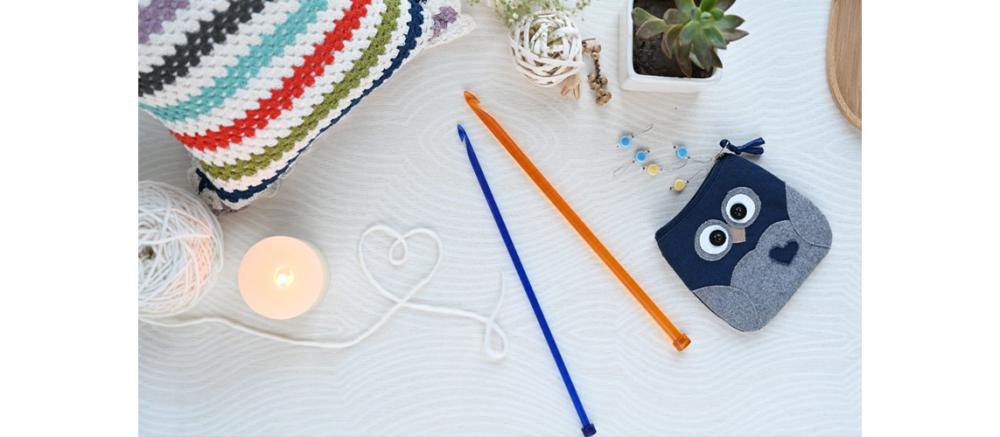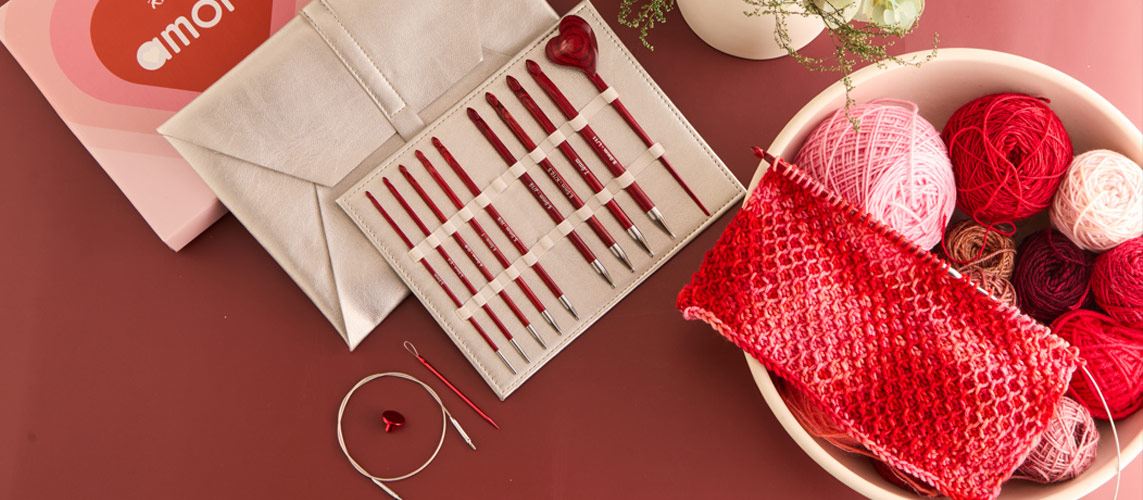Tunisian crochet is gaining popularity. Over the years, the unique hybrid between knitting and traditional crochet, blending techniques to create a beautifully textured fabric is being picked by crocheters and knitters. While the texture looks like a beautiful mix of knit and crochet, the technique is worked by picking loops on crochet hook. Our guide on everything you need to know about Tunisian crochet is a good start. Though you work with a hook, unlike regular crochet hooks, Tunisian crochet hooks are longer sometimes with a cord attached, much like circular knitting needles. Each row combines a forward and return pass, producing a textured, woven look. As with any new skill, learning Tunisian crochet has its challenges, so here are some handy tips to help you achieve beautiful, smooth results.
Tip 1 - Choose the Right Hook Size
One of the key factors in Tunisian crochet is using a larger hook size than you would for regular crochet or knitting. The yarn label usually suggests a hook size, but for Tunisian crochet, you’ll want to go up by at least 1–2 mm or 1 or 2 sizes bigger than suggested. This extra size prevents the fabric from becoming too dense and stiff, helping it achieve a more natural drape.
For example, many Tunisian crocheters recommend if you’re using sock or fingering-weight yarn, try a hook size in 3.5mm. For DK weight yarn, a 4.5mm (K) hook works well. Using too small a hook will cause excessive curling in the fabric, which may not be correctable even with blocking. A larger hook allows for a looser, more flexible fabric that’s easier to work with and more visually appealing. You can refer to our guide on choosing Tunisian Crochet Hook for beginners.
Tip 2 - Pull Up on Your Stitches
In Tunisian crochet, it can be tricky to identify the legs of the stitches, particularly if your hook is too small. Don’t hesitate to gently pull up on your work to make the stitches more visible. This helps you work into the correct stitch during the forward pass, ensuring your rows stay even and neat.
Tip 3 - Embrace the Curl, or Block It Out
Curling edges are a well-known characteristic of Tunisian crochet, especially when working with Tunisian Simple Stitch. While using a larger hook can reduce some of this curling, blocking your piece after completion is the most effective way to eliminate curl. Use a blocking method that matches your fiber content, and the curl should relax. You might even consider embracing the curl as a design feature for certain projects, like cuffs or hems. Many Tunisian crochet garments use this effect as a stylish edge.
To learn more about the process of gently transforming your finished project follow our guide on how to block your knitting.
Tip 4 - Prepare for Higher Yarn Usage
Tunisian crochet has a reputation for being a “yarn eater.” It generally uses more yarn than knitting or traditional crochet due to the extra texture and density it creates. Although it might require additional yarn skeins, the texture and unique fabric produced are well worth the investment. Keep this in mind when planning your projects, especially larger ones such as a blanket or a sweater and make sure you have enough yarn on hand to complete your vision.
A handy tip is to always start with a gauge swatch. Work on a small 10 cm square fabric with Tunisian crochet hooks and yarn. You can calculate the yarn amount needed.
Tip 5 - Count Stitches on the Hook
Tunisian crochet’s structure can make it tricky to count stitches due to the different parts of each loop. To keep track, count your stitches while they’re still on the hook during the forward pass, before beginning the return pass. This approach is more straightforward and can help prevent mistakes, similar to counting stitches in knitting.
Tip 6 - Blending Yarns for Color Transitions
Tunisian crochet is ideal for blending colors smoothly, especially when using multiple skeins of the same colorway or creating gradient effects. When working with two or more skeins, swap between them at the beginning of the return pass. Complete the forward pass in one color, then switch to the second color for the return pass, and repeat for a few rows. This technique creates a seamless transition that prevents obvious color breaks, making it perfect for gradual fades and color blending.
Tip 7 - Achieving Clean Edges

Creating clean edges can be challenging in Tunisian crochet, but small adjustments help create smooth, polished borders. At the start of each row, work the first stitch and then pull tightly on the yarn to secure both loops on the hook before continuing. For the other edge, consider using a Tunisian Edge Stitch and gently pulling the yarn when chaining at the beginning of the return pass to keep the edge stitches uniform. This technique ensures that your piece looks neat and professional.
As with any craft, practice is the key to success. Don’t be discouraged if your initial attempts don’t look perfect; Tunisian crochet takes time to master. Try out different hooks, yarn weights, and techniques to find what works best for you. Each project will improve your skills and help you create beautiful, unique pieces.
Tunisian crochet offers a world of creative possibilities. Whether you're drawn to its unique textures or simply curious about trying something new, these tips will help you start strong. With the right hook size, stitch management, and a willingness to experiment, you’ll be well on your way to mastering this beautiful technique. If you are new to crochet or thinking of exploring on the hybrid craft our guide on Tunisian crochet vs single-ended crochet is a good point to start.












